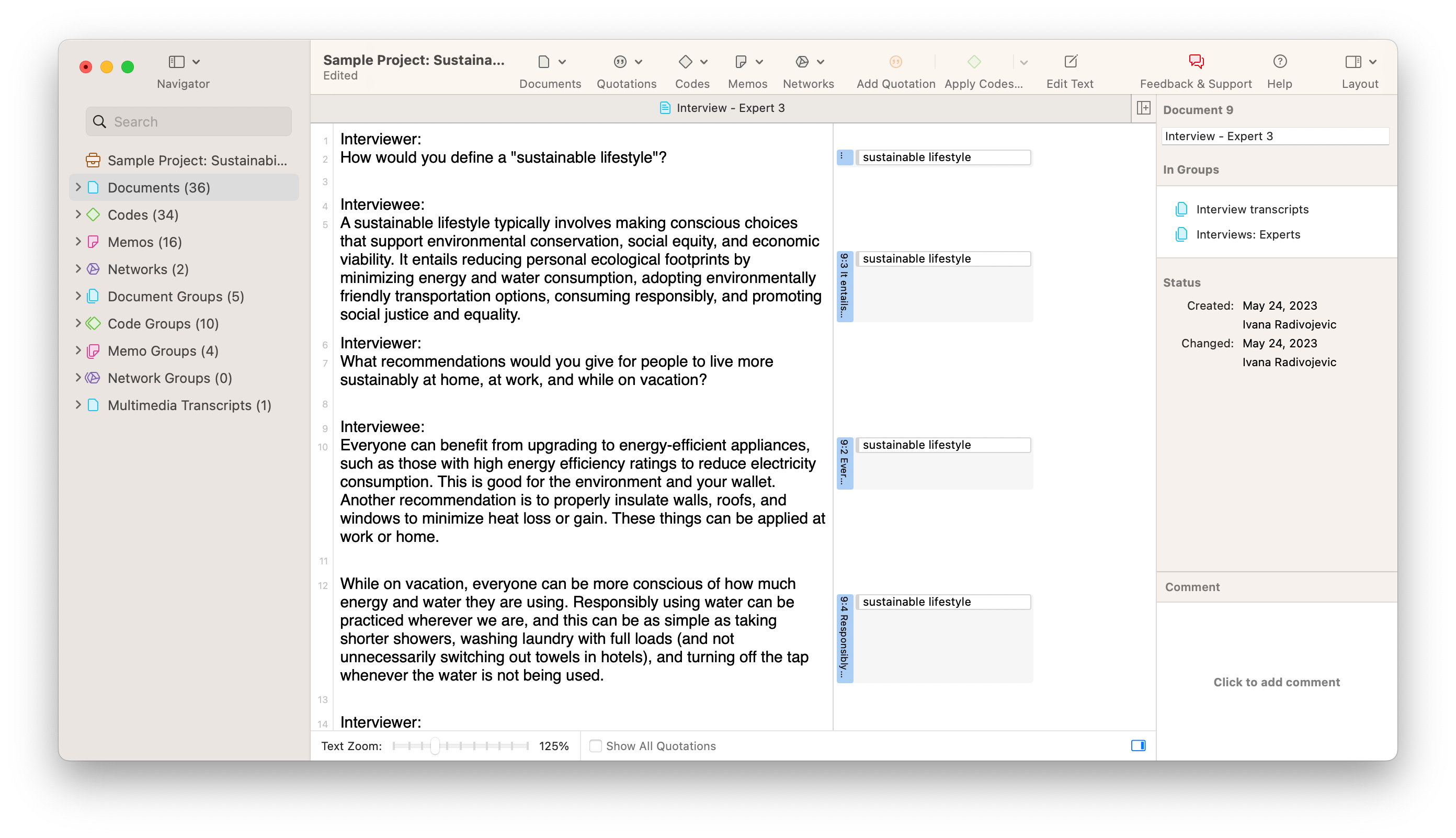Understanding In Vivo Coding: Best Practices & Tips
Introduction
Qualitative analysis often relies on codes that are based on the meaning of the data to which they are applied. In many instances, a code, which can be labeled with descriptive keywords (e.g., "sustainable behavior," "healthy lifestyle"), is applied to a sentence or a larger paragraph. The goal of the inductive coding process, in this sense, is to derive codes from large data sets that condense and synthesize meaning to facilitate analysis.

Sometimes, however, the text of the data itself can have such a profound meaning that it is worth incorporating into a research project's codes. In such cases, researchers can rely on in vivo coding, otherwise known as literal coding or natural coding, to incorporate words or phrases from the text into their analysis.
What is an in vivo code?
In general, codes in qualitative research are employed to facilitate analysis of otherwise unstructured data. For example, if a researcher is coding an interview transcript for instances of sustainable behavior and unsustainable behavior, they can later analyze the codes that represent the two types of behaviors for the frequencies of such behaviors or for the proposal of a definition of such behaviors.
Codes are often labels attached to larger segments of text and they summarize that text in short but descriptive phrases that are easier and quicker to understand. Once the data has been coded, other scholars can understand the main gist of the data by looking at the codes rather than having to read all the data. This also means that every instance of sustainable behavior need not include the words "sustainable behavior" to be given that code. Think about actions such as recycling, water conservation, and waste reduction. Consider that you can talk about any and all of these things without having to use the word "sustainable."
On the other hand, in vivo codes utilize the exact text in your data. This means that you can use participants' exact words to create codes. In vivo codes can also capture terms that are specific to the context being studied, such as jargon or colloquial slang. Overall, creating in vivo codes helps keep the analysis close to the data. The words participants use can have deep meanings in that context, and it can benefit researchers to code the data using those words.
In vivo coding is utilized in many qualitative analysis methodologies, as it facilitates inductive research and creating codes based on the data itself. In vivo coding can also be a particularly suitable coding method for beginner researchers who may be unfamiliar with the process of integrating abstract concepts. When researchers aim to develop theory and actionable insights from an insider perspective, such as when following grounded theory or other inductive processes, in vivo coding appropriately reflects this principle as the resulting data analysis uses the very language that is found in the data.
When should I use in vivo coding?
In vivo coding is often employed as a first cycle coding method, which is the stage where the data is broken down and coded for discrete units of meaning.
In ATLAS.ti, in vivo coding is done by highlighting a particular segment of text, right-clicking on the text, and selecting "Code In Vivo." This option creates the code with the text as its name and creates a quotation of the highlighted portion with the code applied to it. Now that this code is part of your project, you can apply it freely to other segments of text. As you can see in the example below, the phrase "sustainable lifestyle" is used in an interview topic. We have employed in vivo coding on this phrase and applied it to other parts of the interview where the interviewee brings up examples of actions within a sustainable lifestyle.

As always, the creation of codes should always remain relevant to your research question to avoid creating too many codes. In vivo codes are ideal to use on salient words or phrases in your research project. Perhaps a particular culture uses a certain word or phrase that has a special or important significance. Maybe you notice that participants' direct quotes involve the use of a specific expression. Or you might find that the language that participants use speak directly to your research inquiry. These cases exemplify some instances in which in vivo coding can powerfully inform the research.





